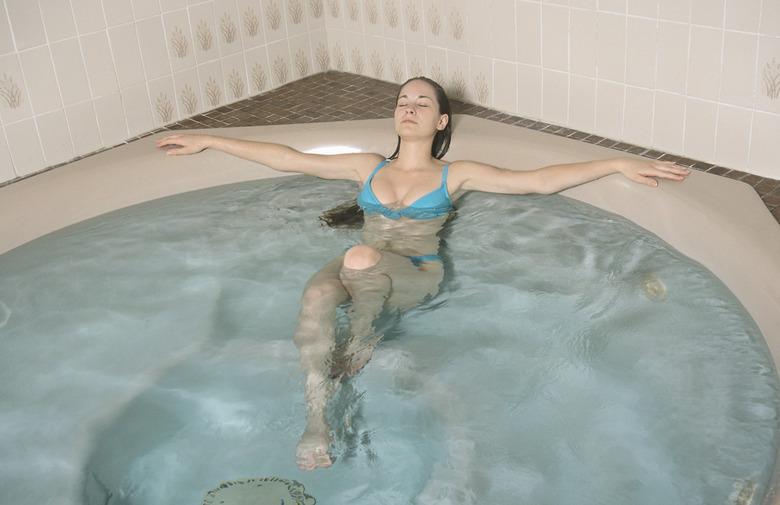Can You A Put A Hot Tub In Your Basement?
A basement works well as a spot for a hot tub. The concrete floor can handle the weight of the tub. But moving a hot tub indoors, to any room, presents some problems that can cause major damage to your home. Understand how to plan for these problems when installing a hot tub in a basement.
Water Hazards
Water Hazards
Water splashing onto the basement floor poses a safety hazard. Surround the hot tub with flooring materials that prevent falls when they're wet, such as rubber mats. The water may also cause structural damage if it's allowed to sit on the floor. Lifting the tub off the floor allows for a proper drain line. Install moisture-resistant flooring materials, such as tile, around the base of the tub.
Humidity
Humidity
The high heat and evaporating water from the hot tub increases the basement's humidity level. When the moist air from the hot tub hits the cool air of the room, condensation forms. The condensation builds up on walls, windows, heating ducts, electrical outlets and fixtures. The damp condensation can facilitate mold growth or cause other moisture damage, including rot.
Ventilation
Ventilation
To combat the increased amount of humidity and prevent condensation, include ventilation in the room. Central air conditioning in the warmer months dehumidifies the air, while during the colder months the heat from the furnace helps dry the humid air. But this isn't enough to address all condensation concerns. Install an exhaust fan, and vent it to the outside of the house. To ensure that all condensation is removed, also install a mechanical ventilation system. It continuously vents fresh outside air into the house and exhausts the interior air.
Getting Help
Getting Help
Consult with an architect or a contractor experienced with properly installing indoor hot tubs. The individual should be able to identify the best place to install the hot tub and understand ventilation systems. The contractor may also suggest installing other appropriate materials such as moisture-resistant insulation.
